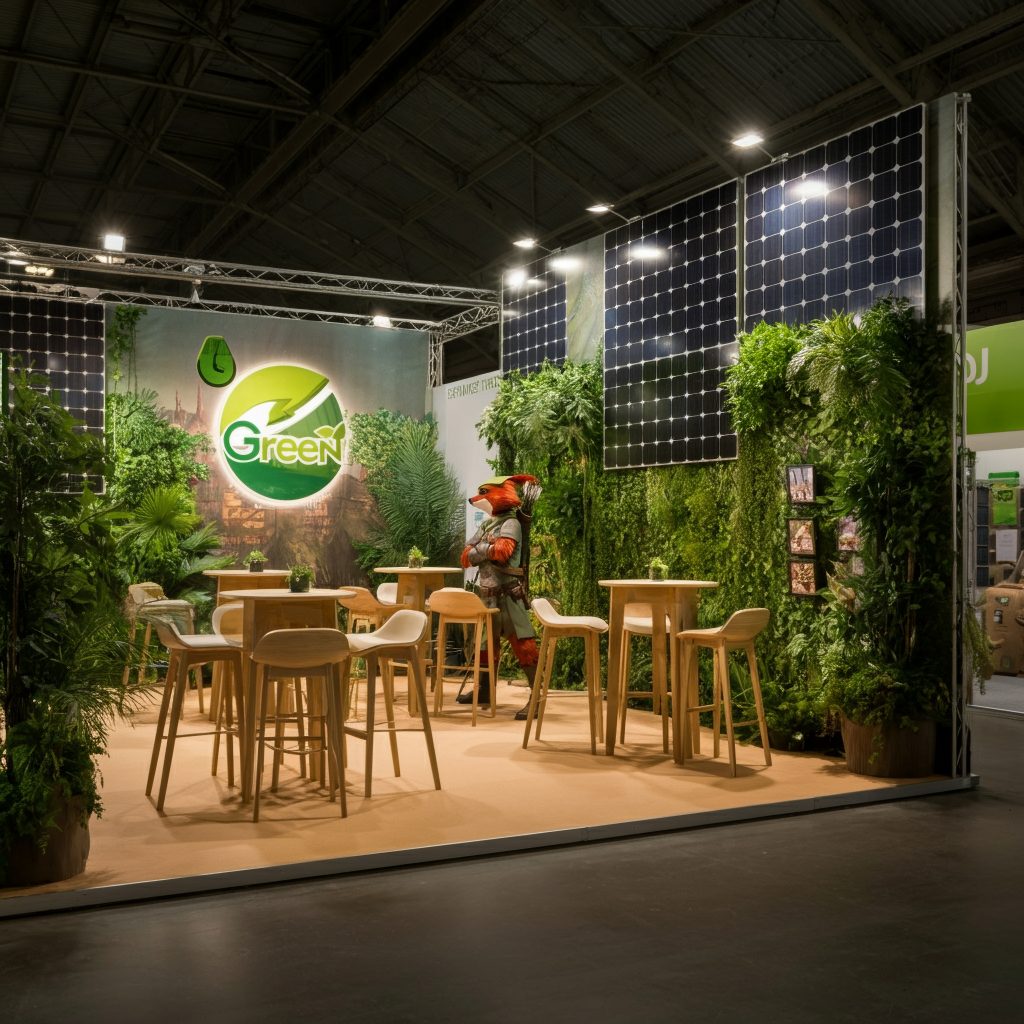
Sustainability and trade shows have never been best friends. For years, trade shows and exhibitions have been significant contributors to landfills, especially in parts of the world where “build and burn” was common. Recently, trade show sustainability has gone to the front of the line with industry associations like EDPA and ESCA advocating for significant changes in trade show practices.
In a report compiled by EDPA and ESCA, Sustainability Guidance for Exhibition Stand Construction, they make 13 recommendations on sustainable practices for the event and trade show industry. All are practical recommendations, like choosing eco-friendly building materials, reusing graphics whenever possible, and considering rental vs. purchase exhibit properties. For companies looking to invest in sustainability long-term, eco-friendly exhibits for sale provide a straightforward way to reduce waste while aligning with corporate green goals. Even something as simple as insisting your exhibit builder use reusable packaging makes a significant difference to the amount of waste sent to the local landfill.
The Importance of Trade Show Sustainability
Many, if not most, companies have sustainability guidelines and goals. Those guidelines impact how waste is handled in your facility, what the purchasing department buys, and how the company sources and uses energy. Yet, sustainability often isn’t a criteria when making decisions about trade show marketing. But it’s an easy choice, one that can contribute, often significantly, to reaching a company’s “green goals.”
Not only is sustainability the right choice, but it can create a selling advantage for your company. Sustainability may not be something you lead with in a presentation, but it might be the added benefit that could spark interest and make you stand out from your competitors. If everything is equal between you and a competitor in the mind of your client, then sustainability might be what wins the project. That’s especially true at a trade show, where identifying “key differentiators” can be the difference between being memorable and being just another exhibitor on the show floor.
Again, trade show sustainability isn’t difficult, nor is it more expensive. Below are 8 sustainable trade show solutions available to any exhibitor regardless of the size of the booth or the size of the budget.
8 Sustainable Trade Show Solutions
Exhibitors often think they need to make an either/or decision regarding sustainability. Either choose a 100-percent eco-friendly exhibit or a booth that gives Mother Nature a symbolic middle finger. Exhibitors with this mindset often fail to realize there’s a middle ground where they can make sustainable choices that align with their marketing goals and budget without going 100 percent granola. Whether you opt for 75-, 50-, or even 30-percent sustainable components, you’re still making a big impact.
For those ready to take sustainability further, there are also eco-friendly exhibits for sale, offering designs that meet your marketing needs while reducing your environmental footprint. These exhibits blend creativity and responsibility, proving you don’t have to sacrifice innovation to prioritize sustainability.
Here are eight eco-friendly, mix-and-match ways to decrease the environmental impact of your exhibit.
1. Modular Trade Show Booth Designs
Any booth can be designed to be reconfigurable, which means you can use a single set of exhibit components to cover your needs for various shows and different footprints. Purchasing components with this in mind reduces the quantity of components that are manufactured and discarded. And while you might opt for modular components as your exhibit’s primary building block, you can use other materials such as wood or foamboard to complement the core elements.
2. Sustainable Building Materials
Most exhibit builders have access to sustainable building materials. And designing and building with those materials is no different than using the non-sustainable options. An eco-friendly booth will look the same, have the same build quality, and be equal in performance. The only difference might be in price — and higher costs aren’t a given. For example, while certified Forest Stewardship Council (FSC) wood might be more expensive than non-certified options, recycled plastic, foam, and metal are similar in price or even less expensive than their non-sustainable equivalents.
3. Eco Printing
Sustainable options for direct printing on recycled foam board and corrugated paper have been around for years, but now, a wide range of recycled fabrics are also available. Most dye-sublimation printers have access to green printing materials, and a few exhibit-industry printers have switched to using only recycled fabrics. These options include backlit and non-backlit materials, twills, and even light blockers. Prices and quality are typically comparable.
4. Rentals
Long gone are the days of dingy, dirty, and distressed rentals from the show contractor. Most rentals are now indistinguishable from purchased booths. Rentals are ideal for exhibitors with heavy trade show schedules, dynamic marketing campaigns, or flexible booth space requirements. And rentals are typically the most sustainable exhibit option since the components are often reused for years. Your booth doesn’t need to be 100 percent rental to fly a sustainable flag. Many exhibitors blend custom exhibit components with rental properties for the best of both worlds.
5. Reusable Flooring
Exhibitors don’t want to abandon their flooring, but given the hassles of packing, shipping, and storing it, many walk away from it when the show is over. However, reusable flooring options, such as raised wood floors, interlocking tiles, and rented flooring, can more easily placate Mother Nature. Plus, they install quickly and easily and allow you to skip padding, which is typically tossed after the show. What’s more, several choices pack flat in boxes for convenient shipping and storage.
6. LED Trade Show Lights
With few exceptions, the industry has switched to LED lighting. Halogen and fluorescent lights disappeared, and no one misses them because the switch to LEDs has expanded the lighting possibilities to backlit graphics and logos and programmable RGB accent lights on counters and ceilings. It’s even gotten easier to backlit hanging signs. If you have a booth with energy-intensive lighting, it’s time to upgrade. The cost is reasonable, and the lights will almost always outlast your exhibit.
7. Booth Donations
Exhibits have both a functional lifespan and a marketing lifespan. More often than not, the stands last much longer than the marketing strategies behind them. So if your exhibit no longer fits your needs but still has some life left in it, consider donating it — or at least some of its components — to a charitable cause. Smaller exhibits, particularly portable in-lines, are ideal for nonprofits, schools, and religious organizations that need displays for educational outreach, events, and fundraising activities. Free-standing elements, such as chairs, tables, and even light fixtures, could go to organizations like Goodwill. So consider donating your display, or better yet, donate the components and chip in for new, organization-specific graphics. You’ll feel better, your company will receive a taxable donation, and the display won’t end up in a landfill.
8. Sustainable Trade Show Giveaways
Sustainable trade show giveaways or promotional products are no longer unusual or crunchy options. Promotional product companies have made a commitment to reducing packaging waste, utilizing recycled or renewable materials, and creating a variety of sustainable products.
According to Rama Beerfas, owner of Lev Productions, “Sustainable products are specifically items made from easily replenishable, natural resources. They are a subset of eco-responsible/eco-friendly products, which include items made from recycled materials and/or recyclable items. While intentions are always good, we need to be fully aware that some products made from sustainable materials (like bamboo) can create non-eco-responsible results due to the way they need to be processed into a final product. Also, not all items made from recyclable or compostable materials can actually be recycled or composted in any given area due to the limitations of different municipality’s recycling centers.
“That being said, for me, the first step in being eco-responsible is to encourage my clients to make strategic product choices by not overbuying and choosing items that will appeal to their target market so they are put to good use. Keeping items out of the landfill is the first step. That should be as important as which materials are used to create the items under consideration.”
Popular Sustainable Giveaways
Orion Recycled Bottle 22 Oz: A handy water bottle that’s eco-friendly! Its aluminum construction ensures durability and long-lasting use, whether you’re on a hike, camping trip, or just commuting to work. Made of recycled aluminum.
Ecoscribe Ring Bound Notebook: The EcoScribe Ring Bound Notebook is a blend of sophistication and sustainability. The 7″ x 9.75″ notebook features 96 dotted pages made from 100% recycled 120-gram weight paper, encased in recycled genuine leather.
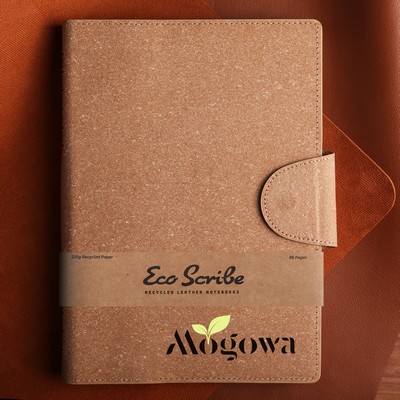
Terratone Headphones: Crafted with sustainable materials, these wireless headphones redefine style and sustainability. Made from recycled faux leather and recycled plastic, they deliver top-notch audio without compromise.
Cotton Canvas Tote Bag: A sustainable and eco-friendly alternative to plastic bags, this tote bag is made of 24 oz. cotton canvas material and comes with your choice of colored handles and bottom.
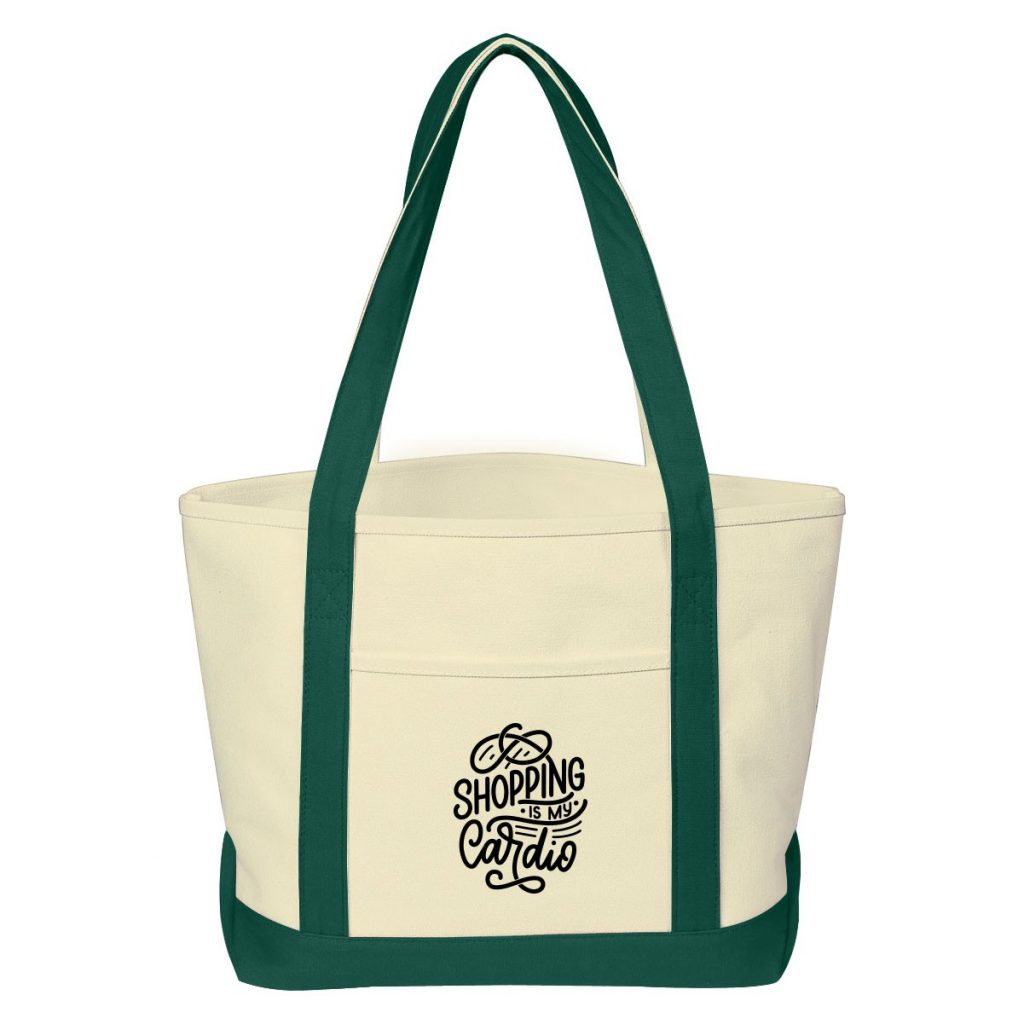
Maxcold 30-can RPET Snap Down Cooler. Designed for durability and with sustainability in mind, the 30-Can Snap Down MaxCold Cooler from Igloo is made from recycled water bottles (RPET). Featuring 25% more foam insulation, MaxCold 10mm PE foam insulation, and a heat-sealed PEVA lining to ensure optimal thermal retention and reliability.
Sonata Eco Pen: The Sonata Eco is a sustainable pen with a recycled content barrel. The barrel is thoughtfully crafted from recycled paper and accented with stylish chrome details.
6 Examples of Sustainable Trade Show Booths
By investing in a sustainable trade show exhibit, companies can not only reduce their environmental impact but also enhance their brand image, improve their bottom line, and contribute to a more sustainable future. The ecoSmart Sustainable line includes over 300 inlines, islands, and accessories, including these six outstanding designs.
1. ECO-4071 | Sustainable Island Exhibit | 20 x 20
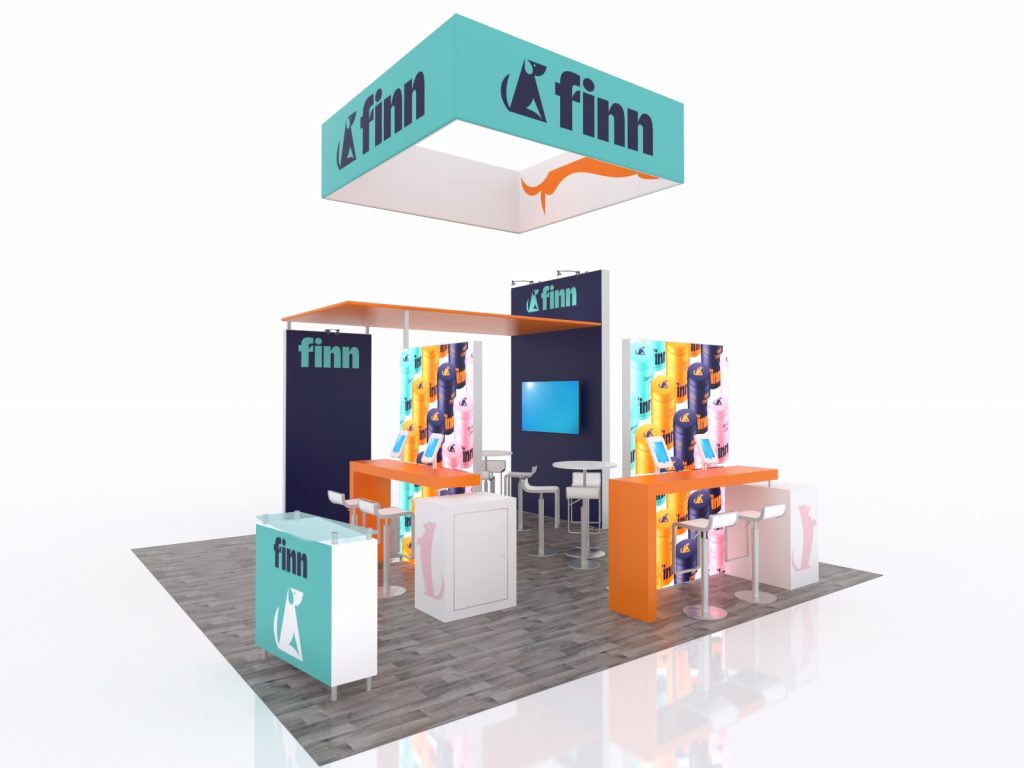
2. ECO-4055 | Sustainable Island Exhibit | 20 x 20
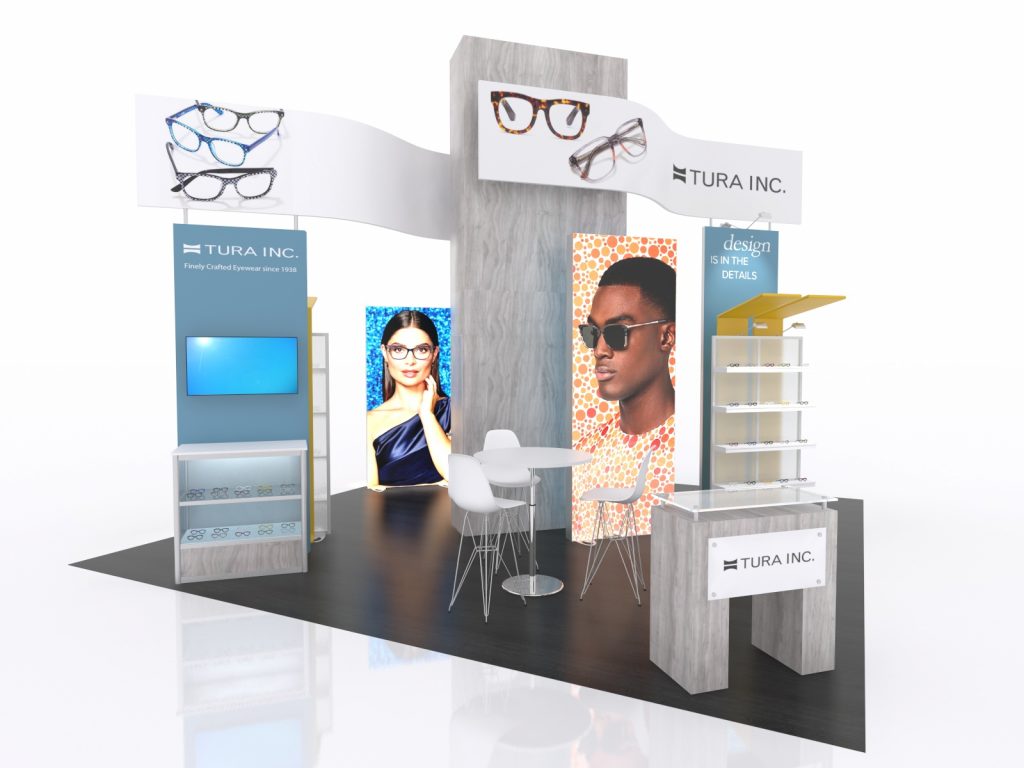
3. ECO-2126 | Sustainable Inline Exhibit | 10 x 20
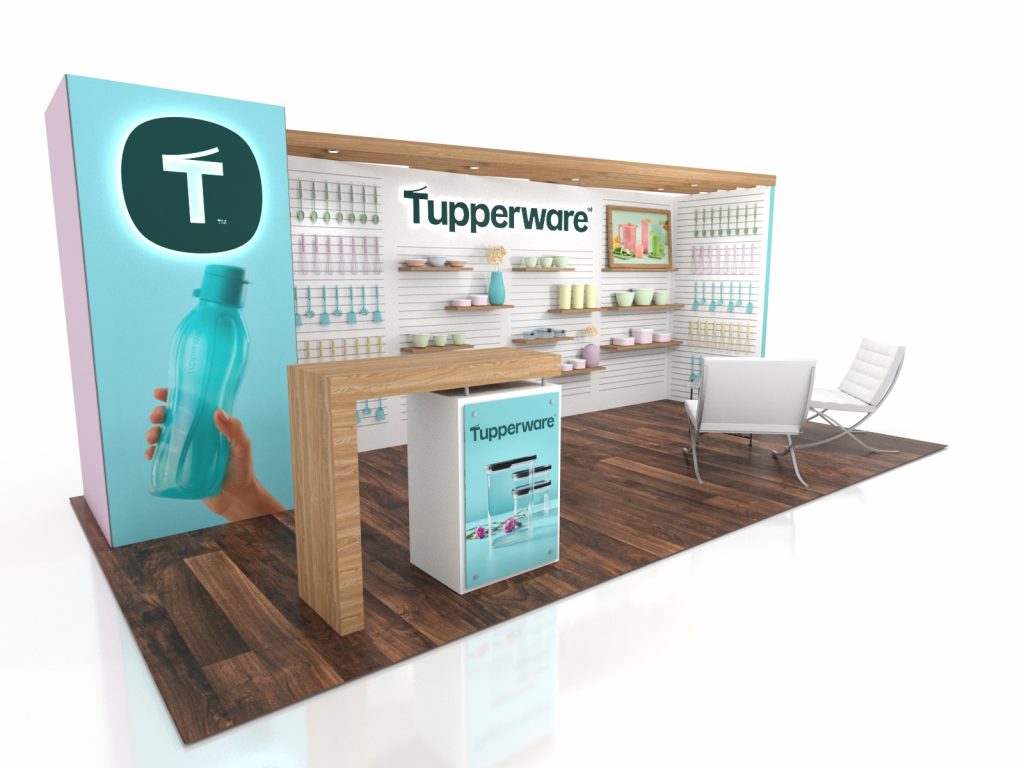
4. ECO-2103 | Sustainable Inline Exhibit | 10 x 20
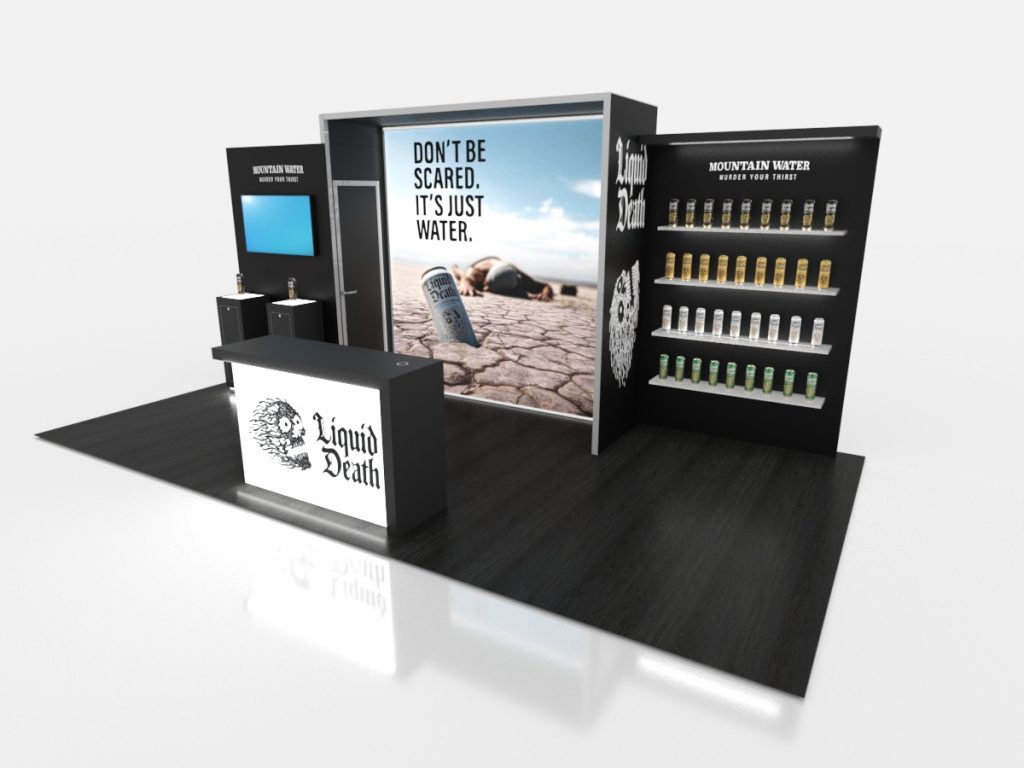
5. ECO-1087 | Sustainable Inline Exhibit | 10 x 10
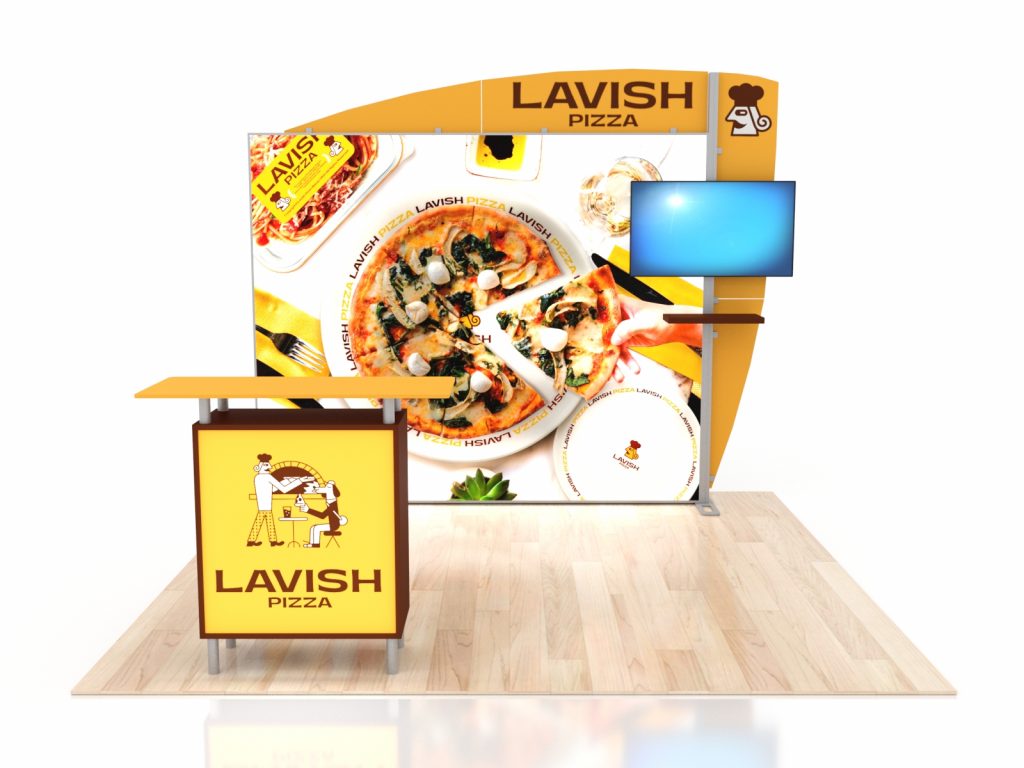
6. ECO-1037 | Sustainable Inline Exhibit | 10 x 10
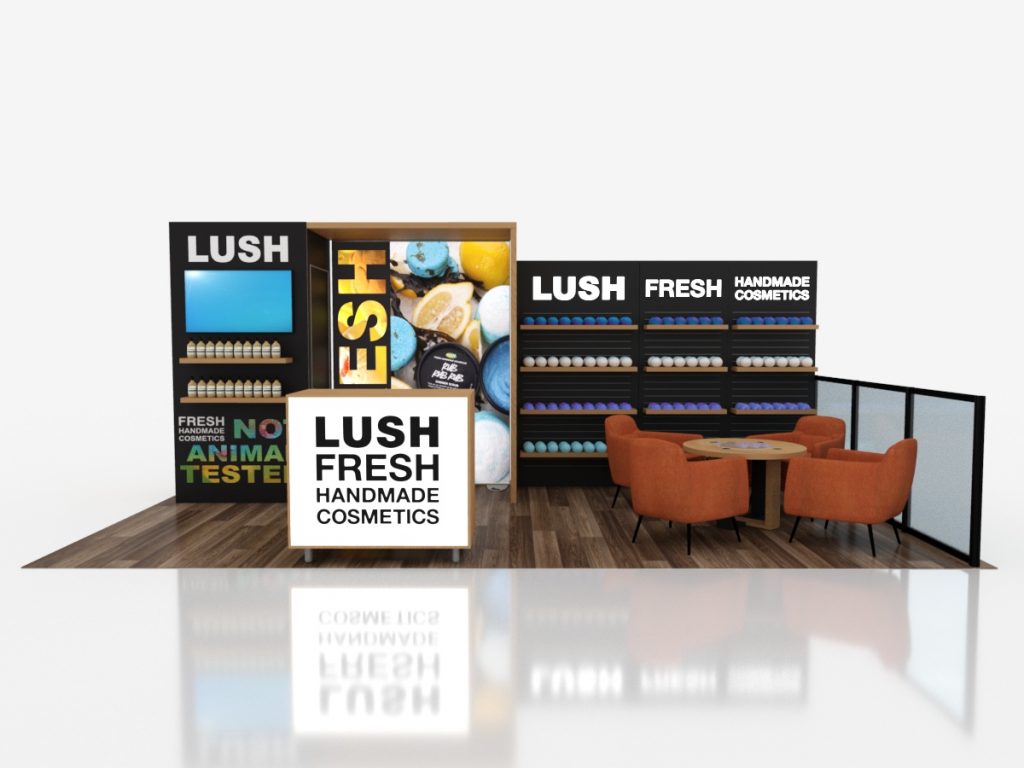
Maximize Trade Show Sustainability with Classic Exhibits!
The sky’s the limit with sustainable exhibits from Classic Exhibits. All of our ecoSmart products are designed and constructed with the most environmentally-friendly materials available.
If you do not see a design that meets your specific needs, let us know. We have an exhibit design ser8 Trade Show Sustainability Solutions for Exhibitorsvice. Allow us to create a unique, custom display that is specific to your needs.
For 30 years, Classic Exhibits has been designing and building creative custom solutions for our Distributor Partners and their clients. As North America’s largest private-label exhibit manufacturer, we have the unmatched capability, capacity, and creativity to create 3D projects ranging from 10 x 10 inline displays to 60 x 80 double-deck islands.
Find success on the trade show floor with an exhibit that reflects your marketing message. For more information, see www.classicexhibits.com and explore Exhibit Design Search or request a meeting with a Classic Distributor Partner.



